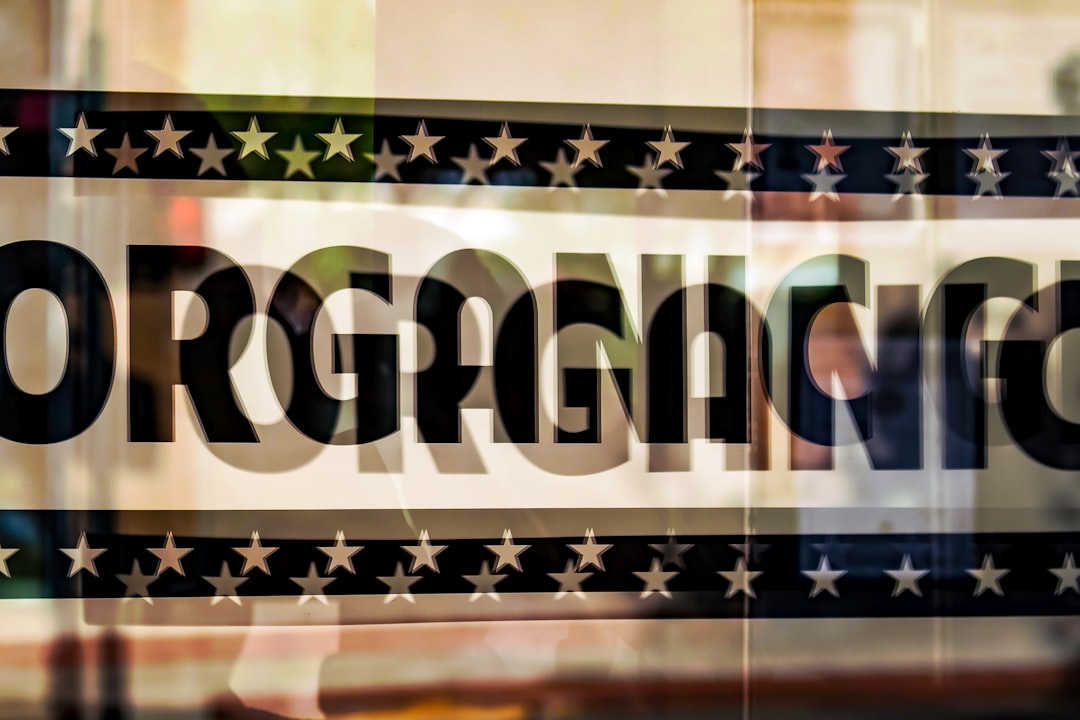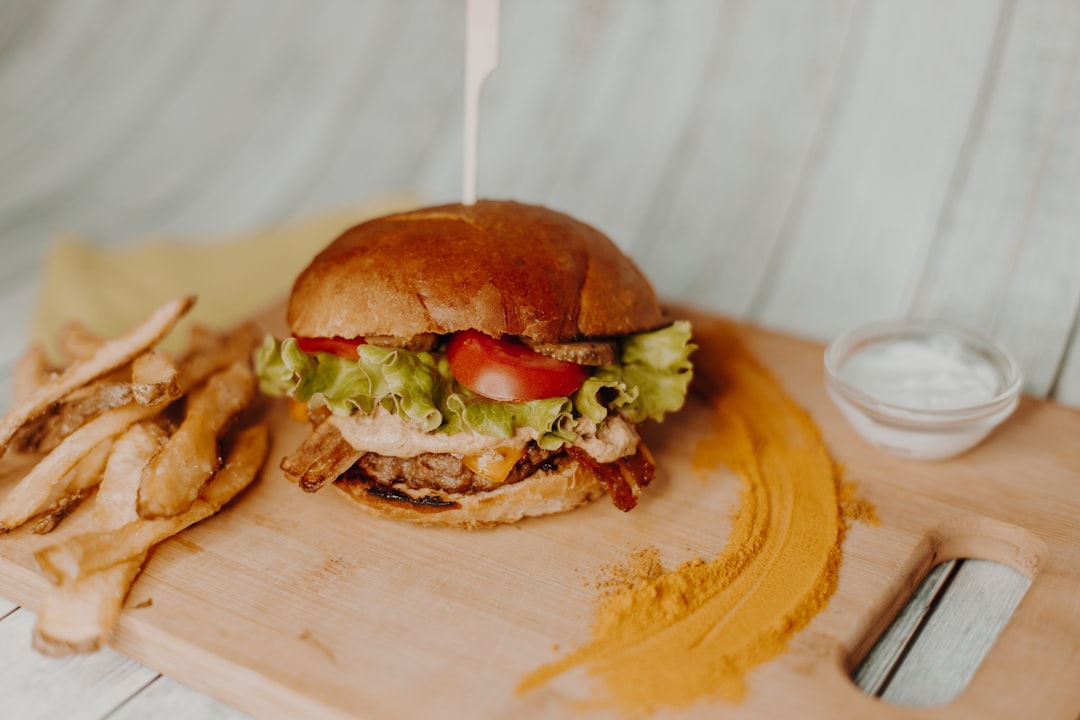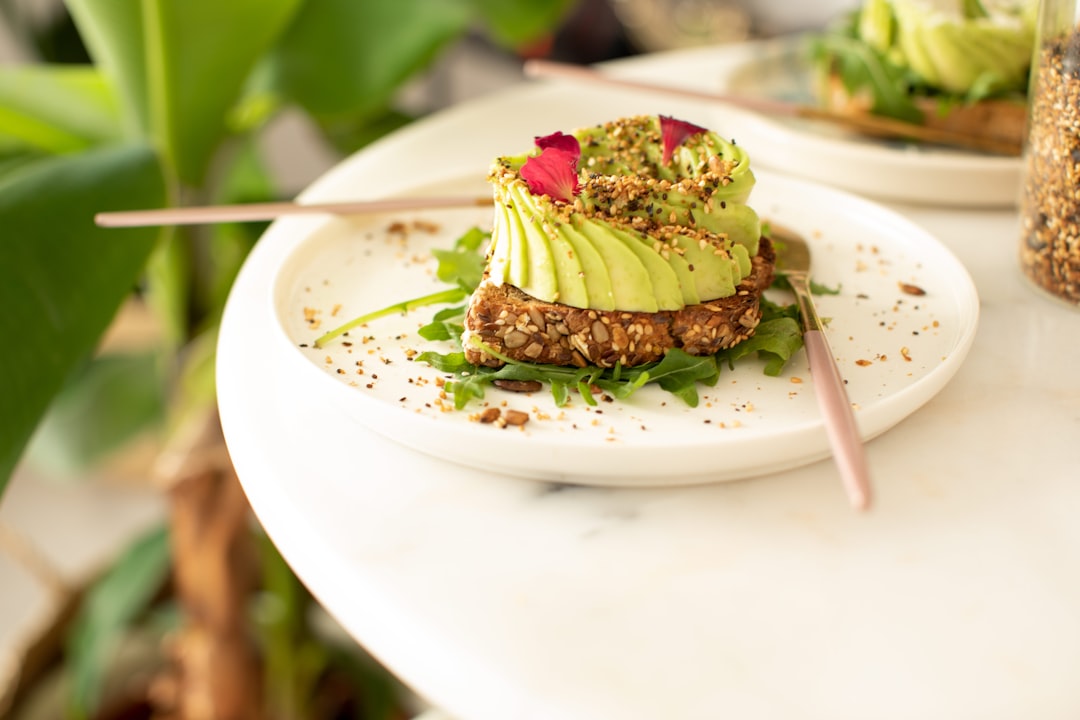

Engage prospects with a scan and streamline customer engagement with FREE QR code marketing tools by Sona – no strings attached!
Create a Free QR CodeFree consultation

No commitment

Engage prospects with a scan and streamline customer engagement with FREE QR code marketing tools by Sona – no strings attached!
Create a Free QR CodeFree consultation

No commitment
QR codes bridge the gap between a restaurant’s physical space and its digital reach, creating frictionless opportunities for plant-based brands to boost awareness, loyalty, and revenue. In vegan restaurants, diners arrive curious and informed. They want clear ingredient transparency, sustainability stories, and creative specials. Yet many high-intent guests remain anonymous when they do not join a waitlist, fill out comment cards, or follow on social media. QR codes fix this by turning a glance at a table tent into a measurable action like viewing a dish video, joining a rewards program, or reserving a chef’s tasting.
For operators, QR codes replace outdated analog steps like printed allergen guides, paper feedback slips, and static flyers. Instead of reprinting menus when supply changes or specials sell out, a dynamic QR instantly updates the menu. Instead of hoping a takeout guest leaves a review later, a QR on the bag prompts a rating at the moment of delight, driving more Google reviews. This creates an efficient loop where each scan generates insight, which then shapes smarter menus, promotions, and guest communications.
Here’s how to use them effectively:
For growth-minded owners and marketers, QR code solutions make it possible to test, segment, and adapt in weeks rather than months. Each scan becomes a signal you can act on: which dishes earn the most views, which placements perform best by daypart, and which offers turn new diners into loyal regulars.

Vegan restaurants must deliver timely nutrition details, menu innovation, and sourcing transparency. Traditional CRMs and analytics do not always show how guests interact with printed menus or table signs. You might know how many covers you did on a Friday, but not which dish videos people watched or which allergen guides they needed before ordering. QR codes provide a bridge from the physical moment of interest to the digital moment of action, making that invisible behavior visible through Sona’s offline attribution.
The impact shows up across the guest journey, from awareness to re-engagement. A passerby scanning a window decal to see the seasonal prix fixe can be nurtured later with a limited-time booking incentive. A dine-in guest who opens a sustainability page from a table tent can be segmented as someone who cares about sourcing, which informs the follow-up content you send. As plant-based dining continues to evolve quickly, QR codes keep your guest communications agile and data-informed.
Addressing these challenges with QR codes yields more flexible, trackable, and cost-effective guest journeys. For vegan dining where education and ethics play a central role, the ability to present up-to-date information and measure engagement is a powerful differentiator.

QR codes can serve multiple functions that simplify access, provide value, and capture vital data. Choosing the right format for the job keeps your front-of-house smooth, your back-of-house informed, and your marketing efficient. In vegan restaurants, format decisions often revolve around how to present dynamic menus, explain nutrition, and lower friction for booking or loyalty.
Web links are the most versatile option for menus, nutrition, and events. vCards help private dining inquiries reach the right person fast. SMS and email triggers support immediate feedback or VIP club enrollment without typing long addresses. Wi-Fi codes reduce friction for in-house browsing and can be paired with consent to join your list. App downloads matter most if you already have a mobile ordering or rewards app.
With a platform like Sona QR, you can generate and manage all of these formats from a single dashboard, switch destinations on demand, and track which types perform best in different contexts.

Growth depends on activating more touchpoints and capturing engagement that used to slip by. In vegan restaurants, curiosity often peaks when people are exploring the menu, passing by your storefront, or enjoying a takeout moment at home. Strategic placement ensures QR codes appear exactly where the desire to act is highest.
Make sure each placement has a clear purpose and a specific destination. A window code should tease a seasonal prix fixe or a first-visit incentive. A table code should open dish-specific stories or allergen filters. A receipt code should push for reviews or loyalty enrollment. By aligning context with intent, you maximize both scan rates and downstream impact.
Beyond these, consider back-of-restroom mirror decals for sustainability content, patio signage for happy hour menus, and community boards for class registrations. Each surface becomes a point of conversion when paired with a benefit-driven CTA.

QR codes enable the core digital experiences that matter to plant-based diners. Focus first on the high-impact uses that simplify ordering, build trust, and close the loop on feedback. Then expand into richer storytelling and loyalty use cases as adoption grows.
By instrumenting each QR touchpoint, you can see how people navigate from menu to allergen guide to order, or from takeout unboxing to a five-star review. You also learn which dishes get the most pre-order attention, which helps with menu engineering and inventory planning.
Each QR touchpoint closes information and engagement gaps. Over time, the combined data informs better menu rotations, more relevant offers, and a guest experience that feels personalized rather than generic.
Every scan reveals what a diner is actually interested in: a mushroom umami burger video, a gluten-free brunch menu, or tickets to a fermentation workshop. When you deploy unique QR codes across different touchpoints, you can automatically categorize scanners by intent and context. These behavior-based segments then drive smarter email, SMS, and ad retargeting. For inspiration, see how a vegan bakery used QR codes to grow their customer list.
Think in terms of moments. A window scan at 5:30 p.m. on Friday suggests near-term dining intent. A catering vCard scan on a weekday morning suggests corporate interest. A takeout bag scan at home could be a prime time to invite reviews or promote your frozen meal line. Segmentation based on these signals converts better than broad lists built from generic sign-ups.
With Sona QR, each code becomes a smart entry point into your funnel. The platform captures location, time, device, and destination data, then syncs it to tools like HubSpot, Salesforce, or your email service provider. This creates a living dataset that powers precise lifecycle marketing for vegan diners. For campaigns that convert, use Sona’s intent-driven retargeting.
To prevent siloed messaging and guest confusion, vegan restaurants must unify print and digital strategies. QR codes act as connectors across your channels, turning every flyer, sign, and package into a digital onramp with measurable outcomes. This alignment saves budget, increases clarity for guests, and shortens the distance between interest and action.
Start by mapping your primary marketing materials and the journeys they should initiate. A catering brochure should connect to an inquiry form. A social post about a seasonal tasting should connect to reservations. A direct mail postcard should connect to a new neighborhood welcome offer. When every asset has a QR that starts the correct journey, you reduce friction and gather performance data that informs your next move.
A unified QR strategy strengthens your overall marketing and guest experience. Using a centralized platform like Sona QR, you can manage codes, monitor results in real time, and push scan data to your CRM so every department stays aligned.
Start by focusing on a single outcome that matters right now. It could be capturing more reviews, promoting an underperforming dish, boosting reservations for a new plant-based brunch, or gathering leads for corporate catering. A clear objective ensures you choose the right destinations, CTAs, and placements.
Translate the goal into a specific guest action and measurable KPI. If you want more reviews, aim for a target completion rate and an increase in average score. If you want to promote a dish, measure click-through from the menu page to order or the number of add-ons per check. This discipline keeps the campaign tight and results-oriented.
Choose the code format that best fits the guest action. Most restaurant campaigns use dynamic web link QR codes because they are editable and trackable. If content or audience needs may change, dynamic is the safe default. Static codes are fine for long-lived assets like a link to your homepage or a PDF that rarely changes.
Consider privacy and consent when using SMS or email codes. If your QR triggers a pre-filled message or asks for a phone number, provide a clear value proposition and make the opt-in explicit. For Wi-Fi, a captive portal grants access after consent, which is ideal for building a compliant list.
Start creating QR codes for free at Sona QR.
Make the QR visible, trustworthy, and easy to scan. Use brand colors and a simple frame that signals the benefit. Place a clear, benefit-driven CTA next to the code, not just below it. For example, Scan to see today’s zero-waste specials or Scan for nut-free choices in under 10 seconds. The CTA should tell guests what they get and how fast.
Test scanning on multiple devices and under different lighting conditions. Laminate table tents to prevent glare. Ensure codes are large enough for comfortable scanning from a typical sitting distance. Consider adding a short vanity URL alongside the code for accessibility if a guest’s camera is not functioning.
Place codes where untracked guests are most likely to engage. Tables are ideal for menus and allergen guides. Host stands and windows are ideal for specials, waitlists, or first-visit offers. Receipts, loyalty cards, and takeout packaging are ideal for reviews and reorders. Align the location with the task and the moment.
Coordinate with staff so they can introduce the QR experience naturally. A simple script like Our specials update all night. Scan this for the latest options and a short clip of our chef describing the ingredients can uplift scans significantly. Encourage the team to point out the value and solve hesitations on the spot.
Use a dashboard to monitor engagement and iterate placements. Track scan volume by hour and day, device type, and destination interactions like menu clicks, allergen filter usage, and form completion. Add UTM parameters to attribute traffic and conversions. Compare performance across placements to identify top performers worth scaling.
Let the data guide your improvements. If menu scans spike before 7 p.m., schedule a special CTA that appears only during that window. If allergen guide scans increase on weekends, create a recurring prep reminder for staff. Iterate your CTAs and visual design, and test small changes like iconography, color, or incentive wording.
This process ensures continuous improvement and measurable results. Over a few cycles, your QR program will feel less like a pilot and more like a core engine for guest engagement and revenue.

Growth is driven by actionable data. Generic analytics often fall short for vegan restaurants because they do not connect offline interest with online outcomes. Advanced QR tracking provides a unified view of how guests interact with your menu, content, and offers, both in-house and at home. The result is a data layer you can use to improve operations, marketing, and menu planning.
By capturing scan context, you can attribute conversions more accurately. You will know which table placements drive reservations, which window signs convert passersby into diners, and which takeout packaging messages generate the most reviews. Granular data like time of day, device type, and QR destination performance helps you run your dining room and your marketing like a modern growth engine.
With Sona QR and Sona.com, you can track every scan, measure engagement by channel and context, optimize in real time, and sync data to your CRM. Sona’s attribution connects anonymous scans to known buyers through identity resolution, then maps each interaction across stages. This helps you prove how QR campaigns influence revenue and allocate budget where it matters most.
Scaling QR success is about consistency and creativity. Consistency ensures every placement has a purpose, a great CTA, and clean tracking. Creativity unlocks new engagement moments that feel fun and useful. In vegan restaurants where storytelling matters, the most effective QR experiences connect guests to the beliefs and craft behind your food.
Start by optimizing the essentials, then layer in inventive twists. For example, a chef’s notebook series explained via short behind-the-scenes videos can elevate a seasonal dish and give diners a reason to return. A QR-linked waitlist for fermentation classes, knife skills, or zero-waste workshops can turn casual diners into community members who engage all month.
QR codes are a vital strategy for vegan restaurants, unlocking the potential of every diner interaction. With so many opportunities lost to incomplete data and generic outreach, integrated QR experiences transform curiosity into loyalty through real-time, data-driven engagement. When each table, bag, and window becomes a gateway to your digital brand, you create a connected journey that feels both modern and personal.
By embracing QR codes as a growth tool, vegan restaurants can discover, communicate, and nurture guests more effectively. Adopt dynamic codes, clear CTAs, and a strong analytics foundation, and you will improve relevance and outcomes week after week. Platforms like Sona QR make getting started simple, then scale with you as your QR program expands across touchpoints and campaigns. Start creating QR codes for free at Sona QR.
QR codes have transformed vegan restaurants from simple dining spots into interactive, engaged communities. Whether it’s attracting new plant-based diners, enhancing the ordering experience, or sharing nutritional and sustainability info seamlessly, QR codes replace static menus and guesswork with instant, mobile-friendly interactions that deepen guest connection and loyalty. Imagine knowing exactly which menu items or promotions spark the most interest—and being able to adjust your offers in real time to maximize satisfaction and sales.
With Sona QR, you can create dynamic, trackable QR codes in seconds, update your campaigns without reprinting menus, and link every scan directly to measurable outcomes like increased reservations and repeat visits. No more missed opportunities—just smarter, more profitable engagement that elevates your vegan restaurant’s brand and customer experience.
Start for free with Sona QR today and turn every scan into a meaningful connection and a loyal customer.
Vegan restaurants use QR codes to connect physical spaces with digital content, providing instant access to menus, allergen information, dish videos, loyalty programs, and reservations, which increases awareness, loyalty, and revenue.
Dynamic QR codes allow instant updates to menus, specials, and allergen guides without reprinting materials, enable real-time tracking of guest interactions, and support personalized marketing and efficient guest communication.
Ideal placements include table tents for menus and allergen info, windows for specials and waitlists, receipts and takeout packaging for reviews and loyalty sign-ups, and event flyers for lead capture and follow-up.
By placing QR codes on receipts, loyalty cards, or takeout bags, guests can quickly submit ratings and feedback at the moment of delight, increasing review volume and improving local SEO and social proof.
Useful formats include dynamic web links for menus and events, vCards for private dining inquiries, SMS or email triggers for loyalty sign-up and feedback, Wi-Fi access codes to reduce browsing friction, and app download links for ordering or rewards.
QR codes capture detailed guest interests by touchpoint and timing, allowing segmentation by intent and channel, which enables personalized email, SMS, and ad retargeting campaigns that convert better than generic lists.
Restaurants should define a clear goal and audience, select the appropriate QR code type, design and test for visibility and accessibility, deploy codes in high-impact locations with staff support, and track and optimize performance using data.
QR codes turn in-restaurant curiosity into measurable digital actions like viewing dish videos or joining waitlists, making previously invisible behaviors visible and enabling data-driven menu and marketing improvements.
Integrating QR scan data with CRM and POS systems allows restaurants to map meal journeys, identify repeat visitors, automate personalized follow-ups, and unify marketing efforts across channels.
QR codes reduce printing costs and errors by enabling instant content updates, streamline guest communication, and allow deployment across multiple materials such as menus, receipts, and packaging to maintain consistent messaging.
Use Sona QR's trackable codes to improve customer acquisition and engagement today.
Create Your FREE Trackable QR Code in SecondsJoin results-focused teams combining Sona Platform automation with advanced Google Ads strategies to scale lead generation

Connect your existing CRM

Free Account Enrichment

No setup fees
No commitment required

Free consultation

Get a custom Google Ads roadmap for your business






Launch campaigns that generate qualified leads in 30 days or less.
